Excerpts from Jim Conrad's
Naturalist Newsletter
entry dated August 25, 2022, issued from near Tequisquiapan, elevation about 1,900m (6200 ft), N20.565°, W99.890°, Querétaro state, MÉXICO
"SALTMARSH ASTER"
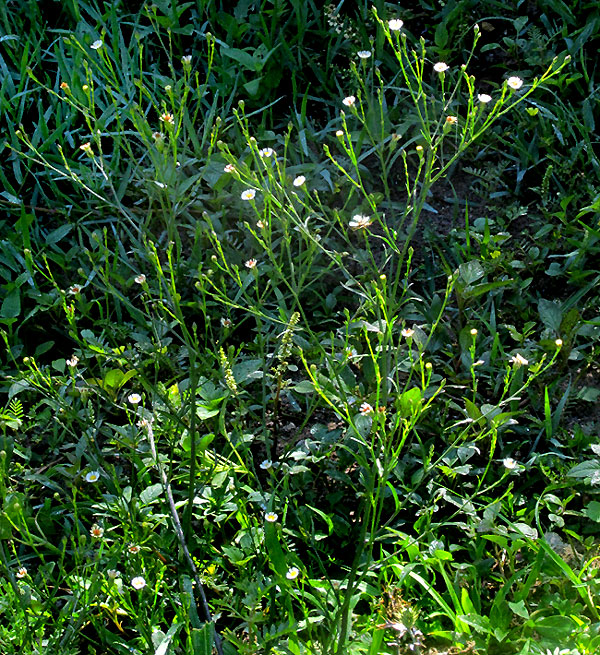
On the floor of a shallow arroyo kept relatively lush by an amazingly wasteful overflow of nearby irrigated fields, the above wildflower seemed much at home.
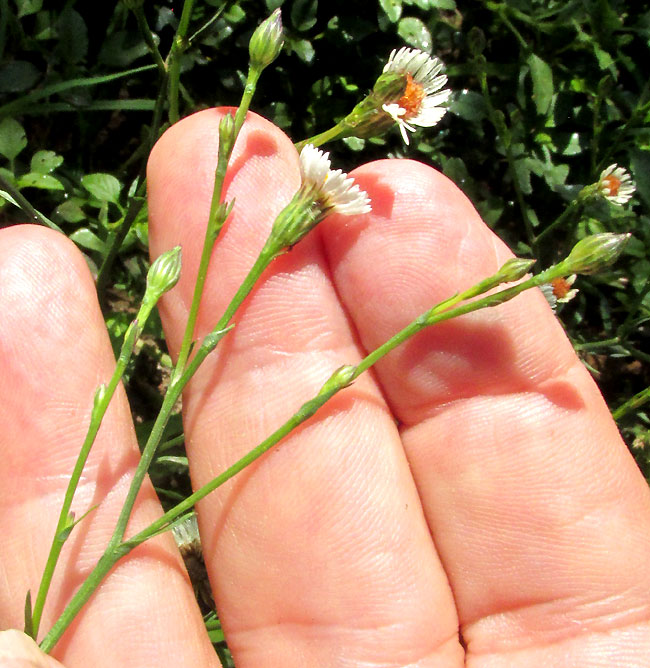
The flowering heads, or capitula, were very much like those of many species of aster in North America, but they were more dispersed on long peduncles than asters normally are, and the white, petal-like ray florets were shorter relative to the green involucre below it. Still, with so many slender, white ray florets surrounding such a tight cluster of bright yellow disc florets in the capitulum's center, it all looked very astery:
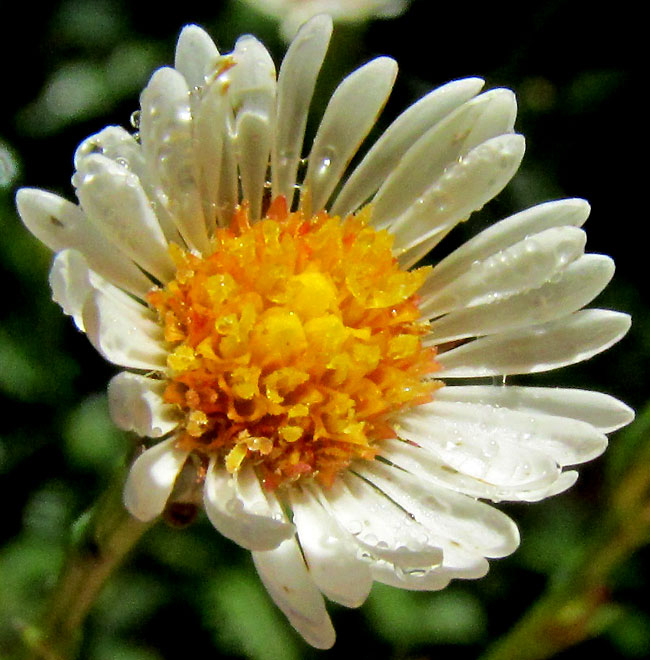
The slender, elongate involucre looked unastery, however:
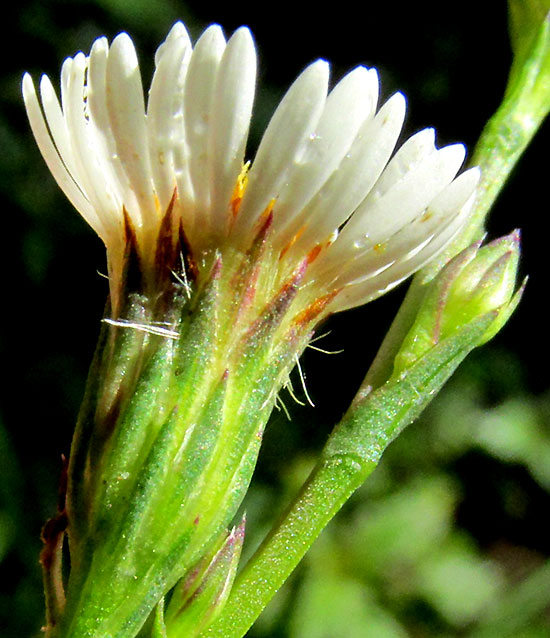
The scale-like, green phyllaries overlapped one another in three or four series, and at their sharp points were purple tinged, and the sides of the points were papery-transparent -- all helpful field marks for identification.
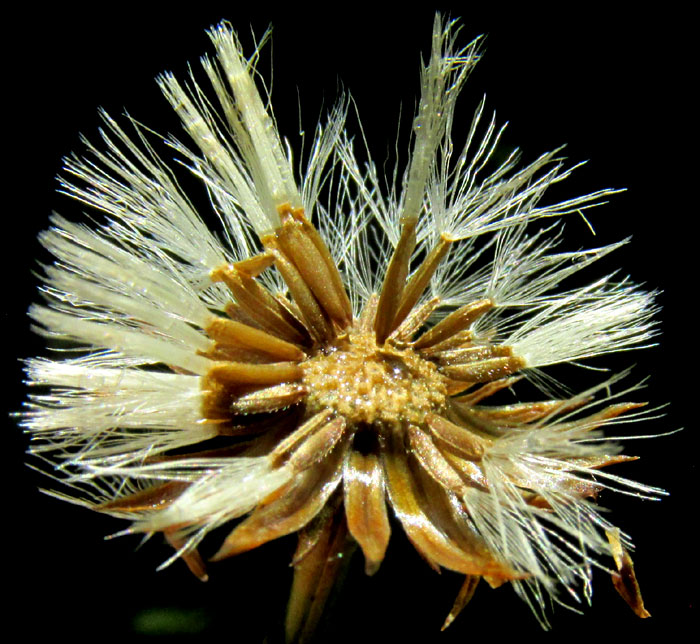
In case there was uncertainty whether we had an actual aster, genus Aster, or something very closely related, the above fruiting head on the same plant dispelled any doubt. Between the stacked-together, grain-like, cypsela-type, brown fruits there are no scale-like paleae partially separating the fruits. Also, each cypsela has atop it a tuft of white hairs that can catch in a breeze and parachute the fruits into new territory. No paleae and white hairs on capitula with such white ray florets and yellow disc florets, with such an involucre means aster, or almost aster. The hairless, green stem and slender leaves also are typically aster:
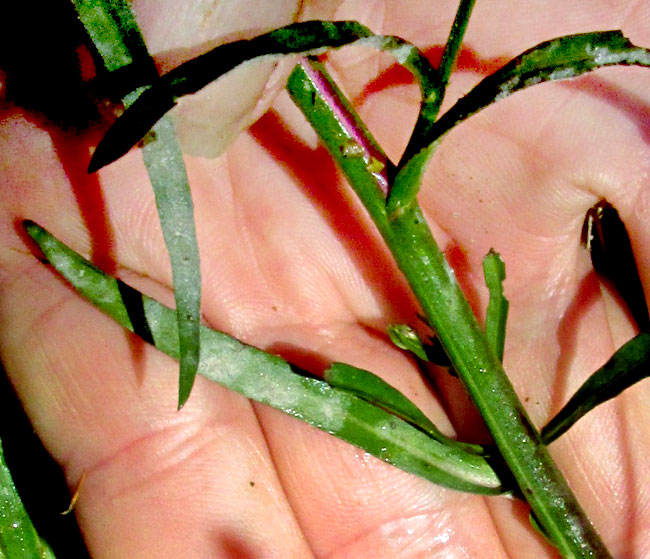
Humanity has had a hard time figuring out how to pigeonhole this species, and information on the Internet is confusing. Best I can tell, at this time our plant is known as SYMPHYOTRICHUM PARVIFLORUM*, though in literature older than a year, it may be called Symphyotricum subulatum var. parviflorum, and in the old days Aster parviflorus. It's native to the US southwestern states, Mexico, most of Central America, Ecuador and the Caribbean. It goes by various English names, none seeming appropriate for anyone not living near the coast. English literature seems to prefer Southwestern Annual Saltmarsh Aster, despite most of its distribution being very far from salt marshes, and not being southwestern to anything.
Besides the usual services of providing oxygen and retarding soil erosion so a complex community can develop on rich soil, asters and aster-like species all produce those little cypsela-type fruits, which small birds such as finches and sparrows crave, and surely small animals, too.